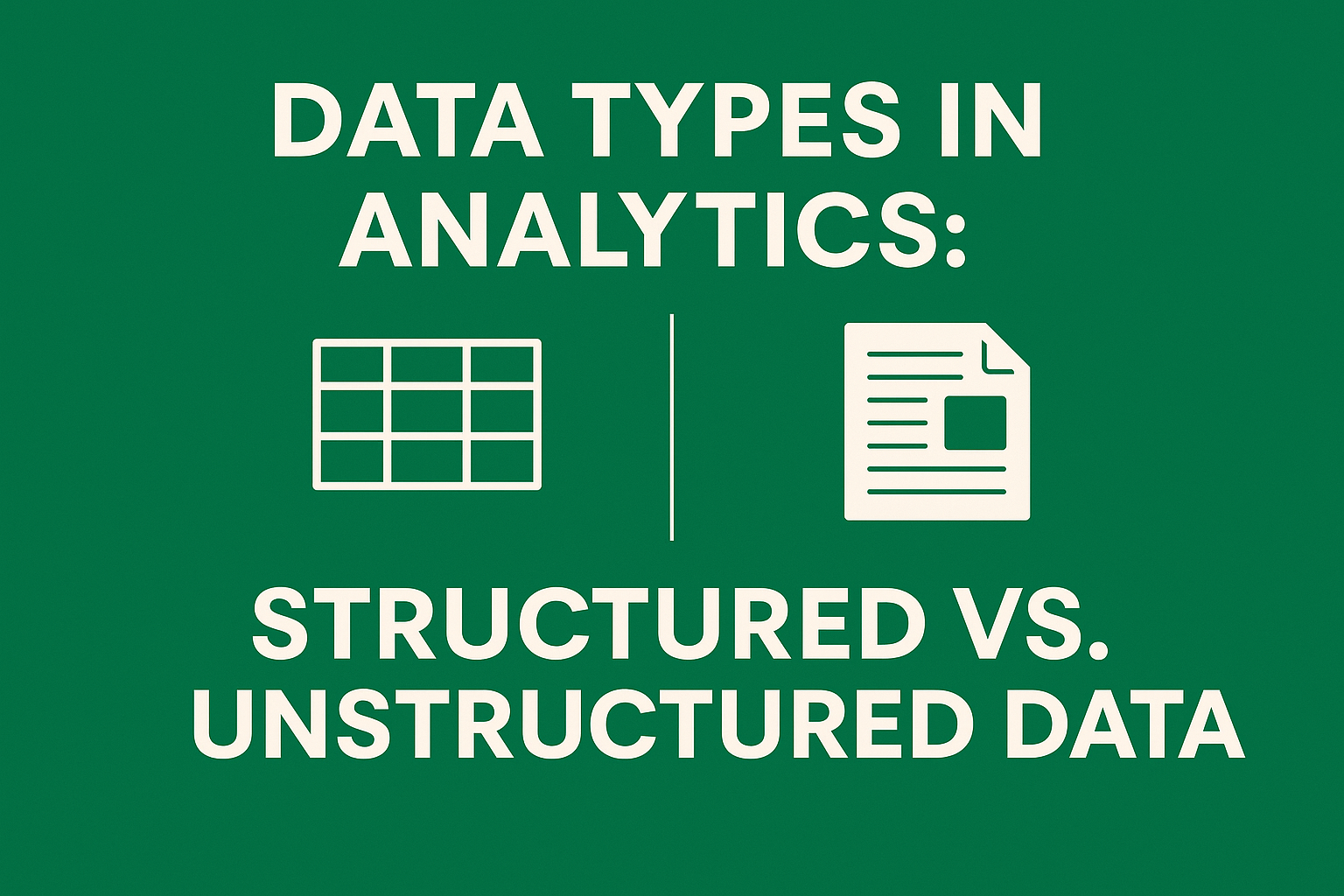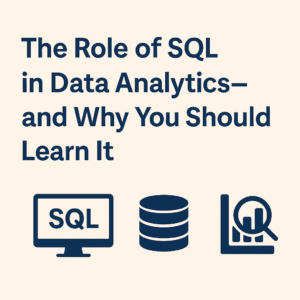In the age of big data, organizations are generating information at unprecedented rates—from customer transactions and sensor readings to social media posts and video content. To make sense of all this information, analysts must understand the types of data they’re working with. One of the most fundamental distinctions is between structured and unstructured data.
This blog breaks down the key differences, use cases, challenges, and tools associated with these two major data categories.
🗂 What Is Structured Data?
Structured data refers to data that adheres to a predefined format or schema, making it easily searchable and analyzable by machines.
📌 Characteristics:
- Stored in rows and columns (e.g., databases, spreadsheets)
- Easy to query with SQL
- Quantitative in nature
📊 Examples:
- Customer information (name, age, address)
- Sales transactions
- Sensor readings
- Time series data
- Web analytics metrics
🛠 Common Tools:
- Relational Databases: MySQL, PostgreSQL, SQL Server
- Data Warehouses: Snowflake, BigQuery, Redshift
- BI Tools: Power BI, Tableau
🧾 What Is Unstructured Data?
Unstructured data lacks a predefined model or format, making it more difficult to search, store, and analyze with traditional tools.
📌 Characteristics:
- Doesn’t fit neatly into tables
- Often text-heavy or media-rich
- Requires NLP, image recognition, or advanced analytics for insights
📊 Examples:
- Emails and support tickets
- Social media posts
- Video, audio, and image files
- PDFs, documents, web pages
- Customer reviews and chat logs
🛠 Common Tools:
- NoSQL Databases: MongoDB, Cassandra
- Text Analytics: spaCy, NLTK, OpenAI APIs
- Big Data Platforms: Hadoop, Spark
- Cloud Storage: AWS S3, Azure Blob Storage
🔄 Structured vs. Unstructured Data: A Comparison
| Feature | Structured Data | Unstructured Data |
|---|---|---|
| Format | Tabular (rows & columns) | Irregular (text, media, etc.) |
| Storage | Relational databases | Data lakes, NoSQL, object storage |
| Analysis | SQL queries, dashboards | NLP, ML, deep learning |
| Ease of Use | Easy to manage and analyze | Requires preprocessing and models |
| Volume | Lower (in comparison) | High-volume, high-variety |
| Examples | Sales data, time logs | Emails, videos, customer feedback |
📈 Why It Matters for Analysts
Understanding data types helps analysts choose the right:
- Tools and platforms (SQL for structured, NLP for unstructured)
- Storage systems (data warehouses vs. data lakes)
- Analytic approaches (descriptive stats vs. topic modeling)
Pro tip: Many real-world datasets are actually semi-structured—a mix of both types (e.g., JSON, XML, or log files). These require hybrid tools and methods.
🔮 The Future: Unified Analytics
The rise of data lakehouses (e.g., Databricks, Snowflake) and AI-powered tools is blurring the lines between structured and unstructured analytics. Companies can now query both data types in near real time, enabling more holistic and scalable decision-making.
🧠 Final Thoughts
Structured and unstructured data each play a crucial role in modern analytics. While structured data is easier to process, unstructured data holds rich contextual insights that can unlock a deeper understanding of customer behavior, market trends, and more.
Understanding the distinction—and mastering both—is key to becoming a well-rounded data analyst or data scientist.
🧰 Resources to Explore:
- 📘 Designing Data-Intensive Applications by Martin Kleppmann
- 📊 Google BigQuery: Structured vs. Unstructured Analysis
- 🤖 OpenAI Embeddings for Unstructured Text

